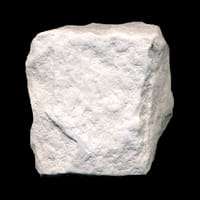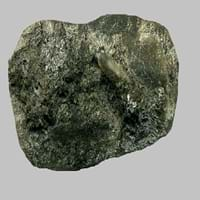Definition
Diatomite is a fine-grained sedimentary rock which is formed from consolidated diatomaceous earth
Kenyte is a variety of porphyritic phonolite or trachyte rock with rhomb shaped phenocrysts of anorthoclase with variable olivine and augite in a glassy matrix
Origin
Germany
Mount Kenya
Discoverer
Unknown
J. W. Gregory
Etymology
From diatom + -ite1
From the mountain ranges- Mount Kenya and is named by J. W. Gregory in 1900
Class
Sedimentary Rocks
Igneous Rocks
Sub-Class
Durable Rock, Soft Rock
Durable Rock, Medium Hardness Rock
Group
Not Applicable
Not Applicable
Other Categories
Fine Grained Rock, Opaque Rock
Fine Grained Rock, Opaque Rock
Texture
Clastic or Non-Clastic
Glassy, Granular
Color
Grey, White, Yellow
Brown, Buff, Cream, Green, Grey, Pink, White
Durability
Non-Durable
Durable
Appearance
Soft
Banded and Foilated
Interior Uses
Decorative Aggregates, Homes, Interior Decoration
Decorative Aggregates, Entryways, Homes, Interior Decoration, Kitchens
Exterior Uses
Garden Decoration, Paving Stone
As Building Stone, Garden Decoration, Paving Stone
Other Architectural Uses
Curbing
Curbing
Construction Industry
As Dimension Stone, Cement Manufacture, Construction Aggregate, for Road Aggregate, Landscaping, Making natural cement, Source of calcium
As Dimension Stone, Cement Manufacture, Construction Aggregate, for Road Aggregate, Landscaping, Making natural cement, Manufacture of Magnesium and Dolomite Refractories, Production of Glass and Ceramics
Medical Industry
Not Yet Used
Not Yet Used
Antiquity Uses
Artifacts
Artifacts, Monuments, Sculpture
Commercial Uses
Alumina Refineries, Animal feed filler, As a Feed Additive for Livestock, Creating Artwork, Drawing on blackboards, Fire resistant, Gymnasts, athletes and mountain climbers use for grip, In aquifers, Soil Conditioner, To ignite fire, Used as a filter medium, Used as an insecticide, Whiting material in toothpaste, paint and paper
Cemetery Markers, Creating Artwork
Types
Not Available
Not Available
Features
Clasts are smooth to touch, Is one of the oldest rock, Smooth to touch, Very fine grained rock
Application of acids on the surface causes cloudy frosting, Available in Lots of Colors and Patterns, Dissolves in hydrochloric acid, Is one of the oldest rock
Archaeological Significance
Monuments
Not Yet Used
Used
Famous Monuments
Not Applicable
Data Not Available
Sculpture
Not Yet Used
Used
Famous Sculptures
Not Applicable
Data Not Available
Figurines
Not Yet Used
Used
Formation
Diatomite rock formed from the skeletal remains of single celled plants called diatoms. When diatoms die, their skeletal remains sink to the bottom of lakes and oceans etc. hence forming diatomite deposit.
Kenyte is a fine-grained, hard rock which is a type of metasomatite, essentially altered basalt. It forms with or without crystallization, either below the surface as intrusive rocks or on the surface as extrusive rocks.
Mineral Content
Calcite, Clay, Clay Minerals, Quartz, Sand
Albite, Amphibole, Biotite, Cancrinite, Feldspar, Hornblende, Plagioclase, Pyroxene, Sodalite
Compound Content
Ca, NaCl, CaO
Aluminium Oxide, CaO, Iron(III) Oxide, FeO, Potassium Oxide, MgO, MnO, Sodium Oxide, Phosphorus Pentoxide, Silicon Dioxide, Titanium Dioxide
Types of Metamorphism
Not Applicable
Burial Metamorphism, Cataclastic Metamorphism, Impact Metamorphism
Types of Weathering
Biological Weathering, Chemical Weathering, Mechanical Weathering
Biological Weathering
Types of Erosion
Chemical Erosion, Coastal Erosion, Wind Erosion
Chemical Erosion, Coastal Erosion
Grain Size
Very fine-grained
Fine Grained
Fracture
Not Available
Conchoidal to Uneven
Streak
White
White, Greenish White or Grey
Porosity
Highly Porous
Highly Porous
Luster
Dull
Greasy to Dull
Compressive Strength
Not Available
Cleavage
Non-Existent
Poor
Toughness
1
Not Available
Specific Gravity
2.3-2.4
2.6
Transparency
Opaque
Translucent to Opaque
Density
2.49-2.51 g/cm3
2.6 g/cm3
Specific Heat Capacity
Not Available
Resistance
Heat Resistant
Heat Resistant, Impact Resistant, Wear Resistant
Deposits in Eastern Continents
Asia
Brunei, India, Indonesia, Malaysia, Singapore, Thailand, Vietnam
Indonesia, Iran, Russia, Saudi Arabia, Sri Lanka, Taiwan, Thailand, Turkey, Turkmenistan, Vietnam
Africa
Cameroon, Chad, Ghana, Kenya, Malawi, Sudan, Tanzania, Togo, Zambia, Zimbabwe
Angola, Egypt, Madagascar, Namibia, Nigeria, South Africa
Europe
England, France, Germany, Spain, United Kingdom
Andorra, Finland, France, Germany, Great Britain, Italy, Norway, Portugal, Spain, Sweden
Others
Not Yet Found
Greenland
Deposits in Western Continents
North America
Canada, USA
Canada, USA
South America
Colombia
Brazil, Chile, Colombia, Uruguay, Venezuela
Deposits in Oceania Continent
Australia
Adelaide, New Zealand, Queensland, Tonga, Victoria, Yorke Peninsula
New Zealand, Queensland, South Australia, Tasmania, Western Australia
All about Diatomite and Kenyte Properties
Know all about Diatomite and Kenyte properties here. All properties of rocks are important as they define the type of rock and its application. Diatomite belongs to Sedimentary Rocks while Kenyte belongs to Igneous Rocks.Texture of Diatomite is Clastic or Non-Clastic whereas that of Kenyte is Glassy, Granular. Diatomite appears Soft and Kenyte appears Banded and Foilated. The luster of Diatomite is dull while that of Kenyte is greasy to dull. Diatomite is available in grey, white, yellow colors whereas Kenyte is available in brown, buff, cream, green, grey, pink, white colors. The commercial uses of Diatomite are alumina refineries, animal feed filler, as a feed additive for livestock, creating artwork, drawing on blackboards, fire resistant, gymnasts, athletes and mountain climbers use for grip, in aquifers, soil conditioner, to ignite fire, used as a filter medium, used as an insecticide, whiting material in toothpaste, paint and paper and that of Kenyte are cemetery markers, creating artwork.









